Friday Night Gaze #4 - The Solar System
Welcome to another exclusive quality post about astronomy here at my Friday Night Gaze blog. Last time I showed you a little insight on how the celestial mechanics work.
Today I want to give you a glimpse of our solar system.
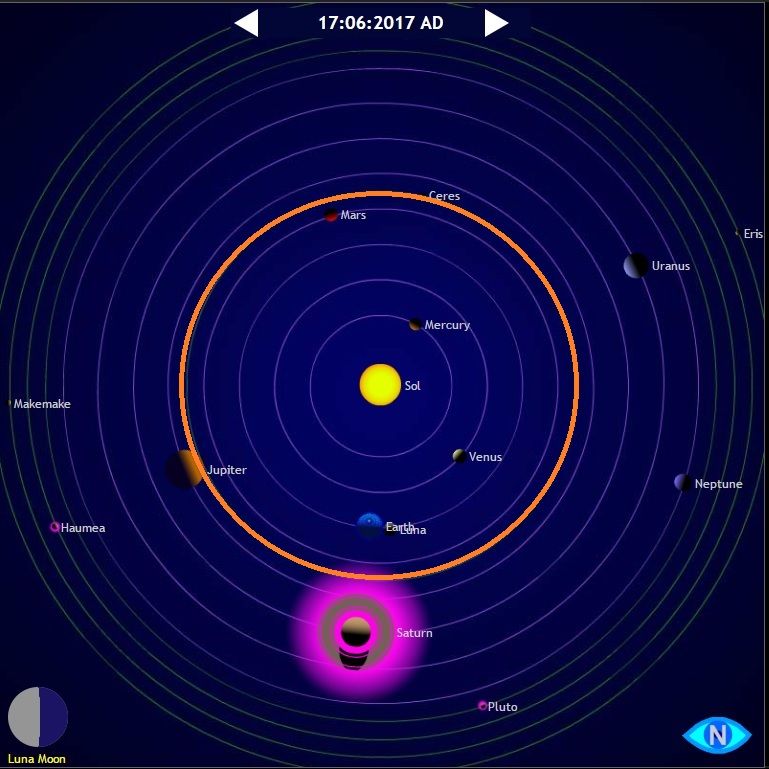
The picture above shows the Solar System with the constellations of the planets as they are of today 17th of June 2017. You can check this for yourself here http://www.theplanetstoday.com/
I drew an orange line between Jupiter and Mars, because that is a boarder within the solar system. It´s the boarder between the "inner solar system" and the "outer solar system".
The inner solar system is made up of four relatively small rocky planets, with Earth being the largest. You probably know the others by their name - Mercury Venus (Earth) and Mars. Let´s take a closer look to this group in scale.
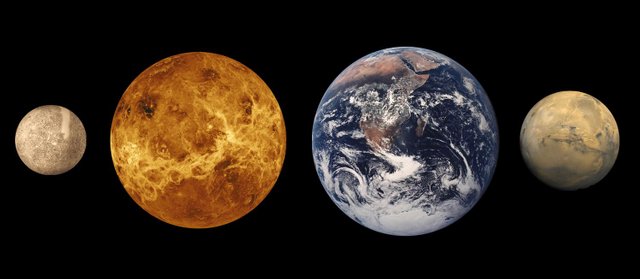
You can clearly see that Mercury is the smallest, Venus and Earth alsmost equal in size, and Mars being half the size of Earth.
[Note: If you happen to visit Venus, or simply observe it with your telescope, you won´t be able to see its surface, because it has a very thick atmosphere which you can not look thru. The picture shown here was captured in radio wavelength]
Now if we are flying out of the inner solar system, we have to cross the boarder mentioned above, which is not only an orange line in a picture, but in fact it´s the so called asteroid belt.

The white dots are the asteroids of the asteroid belt.
The green dots are Jupiter Trojans, and are in orbital resonance with Jupiter.
The orange dots is Hilda family, and are asteroids in 3:2 orbital resonance with Jupiter.
The red dots are near Earth objects (a selection of)
These are the 4 largest known asteroids in the belt: Ceres, Vesta, Pallas, and Hygiea
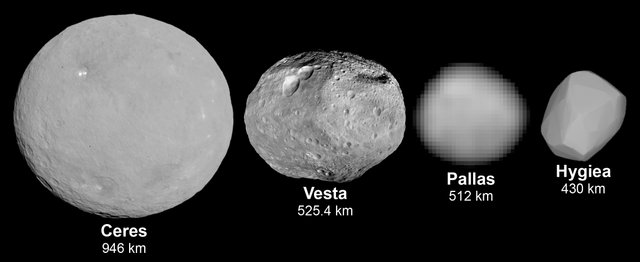
With Ceres being one of the 5 dwarf planets. Ceres was discovered in 1801 by Giuseppe Piazzi.
Now we can take a look at the outer solar system - the 4 gas giants in scale - Jupiter, Saturn, Uranus and Neptune.
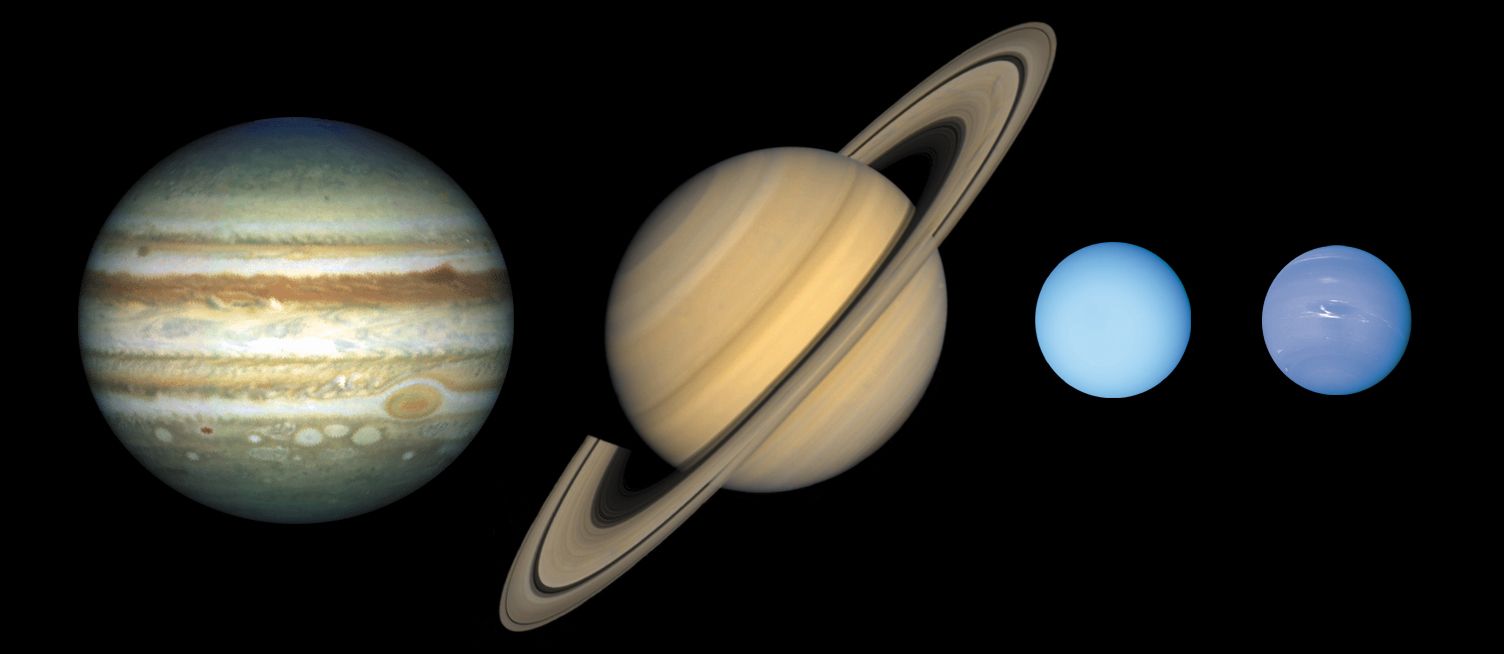
If we look closely, we´ll see that all of them are showing stripes (even Uranus on infrared pictures).
Those stripes are the outer atmosphere layers, and are generated because of the relatively rapid rotation of those planets. Every single one of those 4 planets is rotating faster than Earth. So the clouds don´t get time to form spirals like on Earth, but rather form those stripes because of the immense centrifugal force.
Going further out of the solar system, passing by Neptune, we find another smaller asteroid belt, the so called Kuiper belt.

J, S, U and N are the gas giants - the other dots are known asteroids within the Kuiper belt.
Going even further out we can meet the other 4 dwarf planets, which are circling the sun outside of the Neptune orbit - we already met Ceres in the asteroid belt.
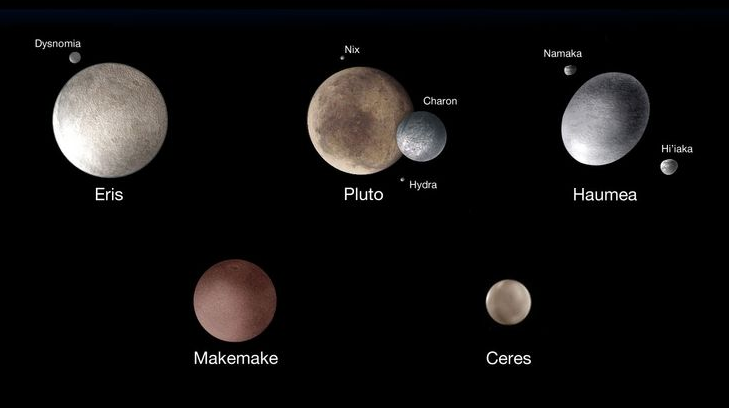
Having arrived at such a distance from the sun, the sun appears not much brighter than any other star in the sky.
Thank you for reading! If you got questions, please use the comments.

Banner by @son-of-satire
Picture sources: 2+5,3, 4, 6, 7
I´m planning to examine each planet in detail in the coming days/weeks, if you want to read more, please show me by giving an upvote!
Clear skies!
Fascinating stuff :) I've always liked astronomy, but haven't been able to find any on Steemit. This was a pleasant surprise .
Upvoted and followed :)